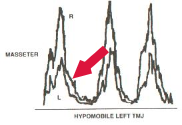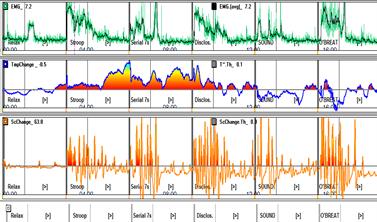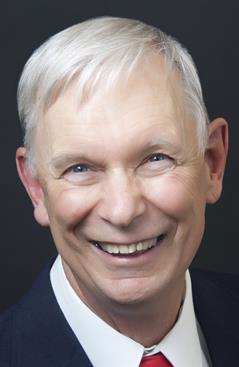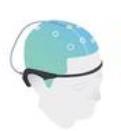THE KEY IS TO LISTEN TO
YOUR BODY
Most people are not aware of being stressed until their arousal is so high they must pay attention to it. Then it is usually too late to think calmly. These are Embodied Thoughts.
Three protocols may help:
1.Thought Interruption- stress self-detection,
2. EMDR- stress-distraction by therapist.
3. Bio- and Neurofeedback- sustained calm focus and/or deep relaxation/sleep.
Go to The Key for more on Embodied Thoughts.
Greeting from Robert Grove, PhD.
Julie Madsen, PsyD.
Office: 79301 Country Club Dr.
Site 101
Bermuda Dunes CA 92203
Business Phone: 760 636 4001
'ABOUT HEALTH PSYCHOLOGY AND BEHAVIORAL MEDICINE'
These pages highlight advanced neuroscience-based treatment approaches that are available today.
I hope you find it interesting.
Got pain? Biofeedback can help.
- Physical Therapy uses PHYSICAL exercises.
- sEMG Movement Biofeedback adds MUSCLE AWARENESS EXERCISES
You WATCH biofeedback screens while viewing your movements. Biofeedback screens allows you to see how your muscles react to movements in real time.
Go here for details.
NEUROFEEDBACK
What is neurofeedback?
Neurofeedback is a form of neurotherapy that trains your brainwaves to achieve a healthier state – kind of like exercise, but for your Is neurofeedback
What is Neurotherapy?
Neurotherapy combines brain exercise programs with Cognitive-Behavioral Therapies focused on Embodied Thoughts.
First we look at your brainwave patterns
SOMATIC BIOFEEDBACK
for Stress, Over-Use, Insomnia, Trauma
sEMG Movement Biofeedback
Pain, Inflammation, Injury and Over-Use
Surface Electromyograpy - sEMG- shows how muscle groups react to movements.
In this example masseter release is inhibited in TMJ.
- Clenching the masseter muscle is a normal clench and tighten pattern.
-Release is different. The muscle releases to about 80% then stalls for the remaining 20%.
Biofeedback Stress Management Programs build resilience to reactions to ongoing stressors.
How do you determine what stressors are overwhelming and which are difficult to recover from?
This is important. An individualized Symptom Stress Profile like the one shown above helps guide you through Biofeedback Training.
The Stress Profile uses Cognitive Challenges, and Recall of Stressful Events to guide you in how to better manage, more quickly recover a feeling of calm and be more resilient.
These Brain Maps help guide Neurofeedback.
What brain areas need exercising?
Ready to Start? Training begins..
Go to here for more...

Note the notch in the decent. This indicates a potential problem













